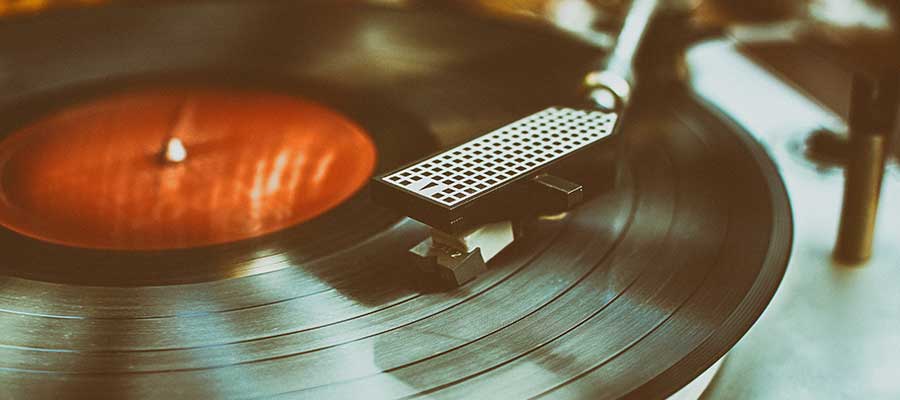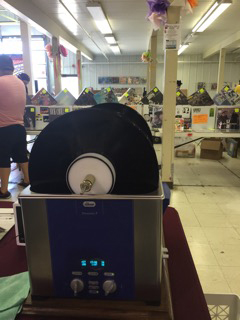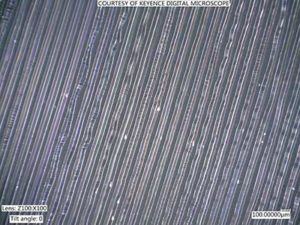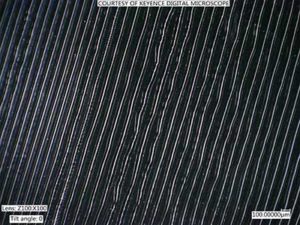
Ultrasonic Cleaning Preserves New and Old Vinyl Records

A Sound Way to Clean Vinyl Records
Why Audiophiles use Ultrasound to Maintain and Restore Fidelity
The Wall Street Journal reports LP record popularity surged in the U.S., selling 41.7 million units, up from 21.5 million in 2020. Sales of LPs nearly doubled in 2021, outselling CDs for the first time in 30 years. Those boxes of vintage vinyl in your attic or garage may also excite collectors willing to pay big bucks. “Collectors know the real vinyl money lies in original pressings and rare vinyl records,” according to an article in Work+Money.
Experts Explain: Ultrasonic Cleaners Maintain New and Restore Vintage Vinyl
Employing ultrasound to maintain new and restore vintage vinyl is accomplished using an ultrasonic cleaner equipped to quickly and safely handle the project.
Cleaning Tips for Vinyl Record Collectors
Gerry, a collector in Spring Hill, Florida, has 4500 LPs and 45s. “For maintaining (or restoring) this sound quality nothing beats a benchtop ultrasonic cleaner paired with a mechanism that rotates the records into and out of the cleaning solution,” he comments. “Ultrasonic energy safely, quickly and completely removes dust and other quality-inhibiting contaminants from the grooves.

“Ultrasonic cleaning, in my opinion, takes record cleaning to the next level as follow-on to my vacuum record cleaning equipment,” he says. “I use the vacuum system on extremely dirty discs that I’ve picked up at flea markets, garage sales and other sources.”
He uses a dual-frequency Elmasonic P60H ultrasonic cleaner obtained from Tovatech. It operates at 37 kHz or 80 kHz, and can be programmed to automatically alternate between the two frequencies at 30-second intervals.
“The 37 kHz frequency is best for removing heavier dirt deposits, while the higher frequency, with its smaller cavitation bubbles, assures cleaning action penetrates the finer grooves in the vinyl,” Gerry explains. “In one case a particularly stubborn deposit was not dislodged by the vacuum system but could not resist the power of a 37 kHz cleaning cycle.” He notes, however, that the 80 kHz frequency is suitable for the majority of cleaning tasks.
A Vinyl Stack mounting bracket is used to position from 1 to 3, 12-inch vinyl LPs in the cleaning solution made by adding a few drops of Kodak Photo-Flo 200 as a surfactant to the tank filled with distilled water. The bracket can also accommodate 10-inch LP and the smaller 45 rpm discs in such a way that only the grooves are subjected to ultrasonic cleaning action. Records are rotated into and out of the cleaning solution at 1 to 5 rpm. Three records can be cleaned in 8 minutes, 1 record in 5 minutes.

Vinyl Record Cleaning as a Commercial Enterprise
The resurgence of interest in vinyl recordings has led to service industries specializing in cleaning the discs to preserve their unique sound quality and minimize wear. An example is Pure-Grooves LLC based in the Chicago suburb of Berwin, IL.
Company founder Vince Tornabene has developed a vinyl record restoration service based on the dual-frequency, adjustable power Elmasonic P60H ultrasonic cleaner provided by Tovatech. According to Mr. Tornabene, regular cleaning results in better sound, preserves investments in discs, extends stylus life and maintains the value of collectables.
“The ultrasonic frequency used depends on the condition of the record with 37 kHz used for extremely dirty discs, Vince says. “This can be followed by the smaller bubbles produced at 80 kHz to complete the cleaning cycle. By removing these contaminants the ultrasonic cleaner lowers surface noise allowing listeners hear music as originally recorded.” And, he adds, helps preserve the stylus.
Extremely dirty discs get a preliminary dunk in a Spin Clean tub then dried. All records are mounted on a motorized spindle that holds up to 4 LPs. Labels are protected by O-rings. The spindle rotates discs into and out of our ultrasonic cleaner bath, a proprietary free rinsing aqueous formulation containing enzymes that handle grease, oil, proteins, starch and sugars.
When records are immersed in the bath cavitation goes to work to safely blast away contaminants; when the discs rotate out of the bath the solution sheets off the surface and drains back into the tank. A typical cycle operates at 2 RPM for 5 to 20 minutes, again depending on the number and condition of the discs.
More on Pure-Grooves’ Selection of the Elmasonic P Ultrasonic Cleaner
“The Elmasonic P series supports the variables that go into our ability to develop perfect record-cleaning cycles based on the condition of the discs,” Mr. Tornabene says. “These include adjustable power, adjustable cleaning solution temperature, adjustable ultrasonic frequency (37 or 80 kHz) and cleaning time.
“It also has a critical Sweep mode that provides a slight variation in ultrasonic frequency that assures more even cleaning while avoiding what are called ‘hot spots’ and ‘dead zones’ of high or no cavitation action.
“These units are of a much higher quality than anything else I’ve tried, and I’ve tried a few, starting with an inexpensive unit from China,” he says. “They don’t have nearly the power advertised, and are poorly designed. You will find that due to the low power, poor transducer placement, standing waves, or other engineering shortcomings that the cleaning result is sub-optimal. This became more evident when more than one record is in the same bath.”
Ultrasonic Vinyl Record-Cleaning Kits
Ultrasonic vinyl record cleaning kits for private collectors and companies offering vinyl record cleaning services are available using the Elmasonic P60H units used by experts quoted in this post.
The CleanerVinyl Pro system offered by Tovatech is designed to be used with the Elmasonic P60H cleaner to clean up to 12 records per batch. Its motor/drive unit, end cap and the drying fan are designed to slip over the rims of the ultrasonic cleaner.
Setting Up the CleanerVinyl System for an Ultrasonic Record Cleaning Cycle
Add the cleaning solution to the ultrasonic cleaner tank. While there are several formulations available on the market for this application, a suggestion is adding approximately 2-4 drops of a wetting agent (surfactant) per gallon of distilled water.
Activate the Degas mode to drive off trapped air.
Cleaning and Drying
Follow the instructions that come with your CleanerVinyl kit.
Cleaning time varies based on the condition and number of records being cleaned. You’ll establish a routine and can use cleaning time to attend to other matters.
At the end of the cycle disassemble the unit, and enjoy the improved sound of your clean classic records!
Maintaining Your Record Cleaning System
Ultrasonic cleaners are used in applications ranging from cleaning automobile transmission gears to surgical and medical instruments. Whatever the application, including restoring old vinyl, contaminants accumulate in the ultrasonic cleaning solution.
To extend the useful life of your ultrasonic record cleaning solution the CleanerVinyl Pro Ultimate option includes a 1-micron particle filtration system that continuously recycles the solution while the unit is in operation. Periodically examining the filter will alert you when it’s time for a replacement. And for more information on selecting and using ultrasonic cleaners in your application, please contact the scientists at Tovatech.

